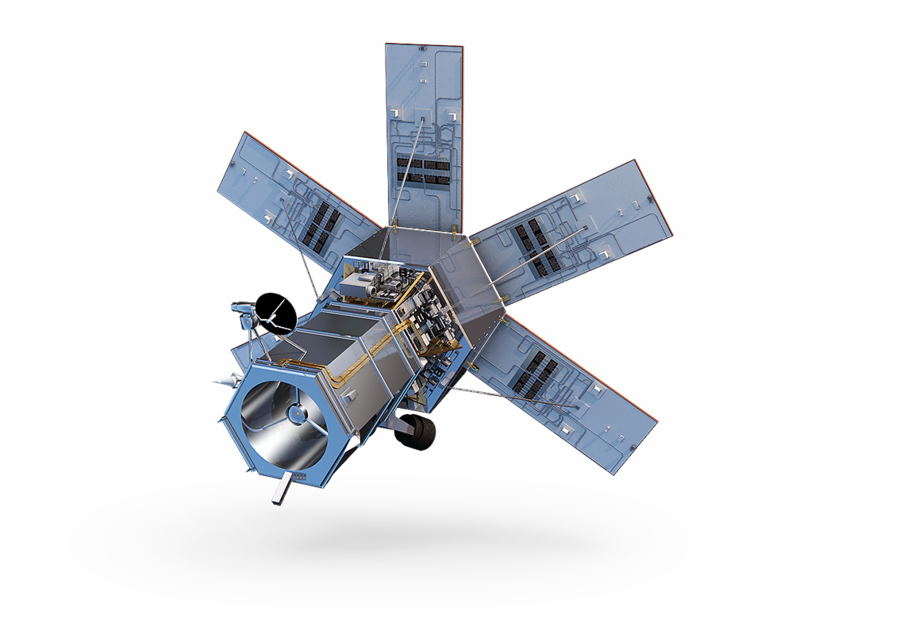So far the company has launched 1325 Starlink satellites although 64 of these have reentered the Earths atmosphere leaving 1261 in orbit. While this is a massive achievement for this satellite internet constellation.
 Starlink Solar Array Size Starlink
Starlink Solar Array Size Starlink
It was 836 kg roughly 58 cm in diameter and used 1 watt of power.

Starlink satellite size. Which contains their most ambitious projects called Starlink internet which aims to provide high-quality internet service throughout the world. Your mom last seen causing the 2004 Indonesian tsunami. As of last week SpaceX has launched eight batches of 60 Starlink satellites forming a constellation of roughly 480 spacecraft with a few that have gone out of service.
Each of the Starlink satellites weighs around 500 pounds 227 kilograms according to SpaceX. In 24-may-2019 SpaceX launched its first Falcon rocket known as FALCON-9 with containing 6-Starlink satellites that we call SpaceX Starlink Satellite. Already SpaceX has launched more than 1000 Starlink satellites reaching 1443 satellites after a April 7 launch.
Planet launched three identical SkySats on a Falcon 9Starlink launch June 13 and the three new spacecraft launched Tuesday will bring the SkySat fleet to 21 satellites. 75kg for 30m2 6kW solar panels. Over time satellites grew in size and complexity but the recent trend is seeing them shrink.
Stacked together inside the payload shroud of a Falcon 9. So on that area Starlink can provide at. But even with the caveat that each Starlink is smaller.
There will also be brief periods of no connectivity at all. Marco Langbroek via SatTrackBlog In the video SpaceXs Starlink satellites pass overhead like a string of pearls a brilliant trail of moving lights in the night sky. 71kg for everything else structure GNC sensors payload etc So Starlink satellite really packs a lot in its 260kg of wet mass.
227 kilograms and is roughly the size of a table according to Sky Telescope magazine. So here is the mass breakdown for total of 260kg per satellite. 33kg of Krypton propellant.
Starlink will happen in phases but the ultimate goal is to have about 8000 satellites orbiting just 500km above the planet and the remaining 4000 orbiting much higher up at around 1200km. Below is the power supply. The black side is for the antenna dish connection and white is.
Hubble was 11110 kg and 132m x 42 m and originally estimated at a cost of 400 million US dollars. The user also shared some pictures of the Starlink kit such as the antenna array named Dishy McFlatface it measures 232 inches or 59 cm and Starlink router. SpaceXs Starlink router will be triangular in shape and when viewed from the base the height of this triangle will be 725mm and the base length will be 385mm.
Each Starlink satellite weighs 500 lbs. The real kicker here is the beam spot size. 30kg of high pressure vessel.
Iridiums NEXT satellites are nearly three times the mass of a Starlink satellite at about 670 kilograms versus an estimated 260 kilograms. During beta users can expect to see data speeds vary from 50Mbs to 150Mbs and latency from 20ms to 40ms in most locations over the next several months as we enhance the Starlink system. Built by Maxar each.
1684 rows Starlink is SpaceXs 12000-satellite low earth orbit constellation to provide broadband. Assuming 15 degree beam radius that leads to surface spot size of just 14km radius or 650km2.

